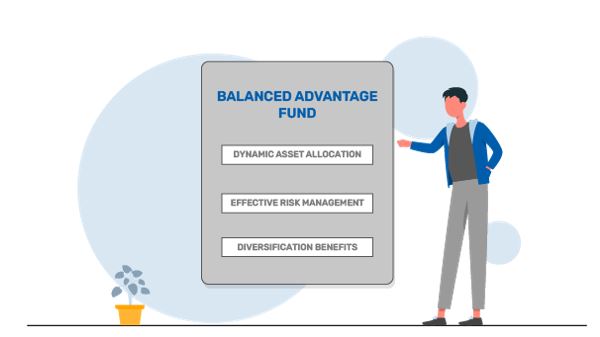Should you consider opting for a balanced advantage fund

In the world of investing, it is wise to follow the principle of buying low and selling high. However, our decisions are often influenced more by emotions like fear and greed than by rational thinking. Indeed, emotional trading can lead to hasty decisions, potentially resulting in financial losses. But what if there was a way to counter these emotions Enter the balanced advantage fund, a dynamic investment vehicle designed to adapt and re-balance asset allocation based on market conditions.
Balanced Advantage Fund
Let’s take a closer look at how these funds work.
The importance of asset allocation
To understand balanced advantage funds, it is crucial to understand the importance of asset allocation. Asset allocation is the strategy of dividing your investments among different asset classes like equity (stocks) and debt (bonds). Proper allocation can help investors manage risks and optimise the return potential. Diversifying across assets can ensure that when one asset class is underperforming, another may be doing well, balancing out the overall portfolio performance.
How do balanced advantage funds work
Balanced advantage funds are unique because they dynamically adjust the allocation between equity and debt based on market valuations. In most cases, when equities are expensive, the fund reduces exposure, and when they are reasonably priced, the fund increases it. This automated approach helps reduce human emotional biases from the investment process.
Why consider a balanced advantage fund
Balanced advantage funds have emerged as a popular choice among investors for several reasons.
-
Dynamic asset allocation: A unique feature of balanced advantage funds is their ability to dynamically shift between asset classes, such as equities and debt. Markets are ever-changing, and static asset allocation might not always be optimal. The adaptability of balanced advantage funds ensures that they remain aligned with current market conditions. Fund managers make use of various metrics and valuation models to determine market conditions. For instance, when the Price-to-Earnings (P/E) ratio of a market is high, it might suggest that equities are overvalued. Conversely, when the P/E ratio is low, equities might be undervalued. Using such indicators, fund managers adjust the asset allocation.
-
Effective risk management: By adjusting the ratio of equity to debt based on market conditions, balanced advantage funds can reduce potential downturn risks during volatile market phases. Conversely, they can capture some part of the upside during bullish phases, offering a dual advantage.
-
Diversification benefits: The inherent design of these funds ensures diversification across asset classes. Therefore, the underperformance of one asset can be potentially offset by the performance of another if the other asset class is performing, leading to a relatively stable investment experience over the long term.
-
Potential for returns: With the capability to switch between asset classes based on valuations, balanced advantage funds can position themselves to capitalise on opportunities in both equity and debt markets. Moreover, the dynamic nature of these funds can lead to relatively consistent returns over the long term. While no investment can guarantee returns, the methodology behind balanced advantage funds is designed to smooth out the highs and lows of the market, leading to steadier growth over the long term.
-
Managing emotional investing: One of the biggest challenges individual investors face is making objective decisions that are free from emotional biases. Balanced advantage funds, with their data-driven strategies, aim to make rational decisions based on metrics and valuations rather than emotions.
What is an effective balanced advantage fund
An effective balanced advantage fund blends the potential for returns with appropriate risk management. The focus is not just on the returns, but also on how those returns are achieved. When evaluating an effective balanced advantage fund, investors should consider factors like consistency, risk-adjusted performance, and the strategy and experience of the fund manager.
Conclusion
Balanced advantage funds offer a dynamic approach to investing, helping investors navigate the unpredictable nature of markets with a combination of equity and debt. By relying on data-driven strategies, these funds aim to overcome the emotional biases that often hinder investment success. Whether you are just starting out or are an experienced investor, balanced advantage funds can offer you a fulfilling investment experience that combines both relative stability and growth potential.
Mutual Fund investments are subject to market risks, read all scheme related documents carefully.
![]()




